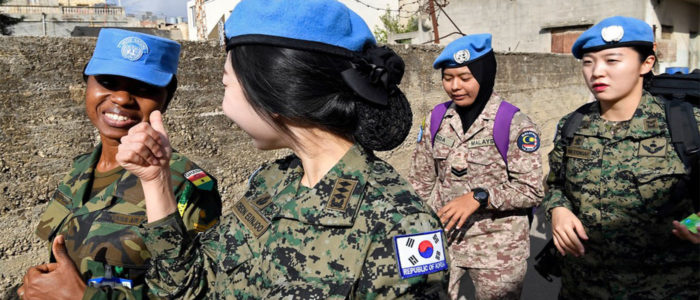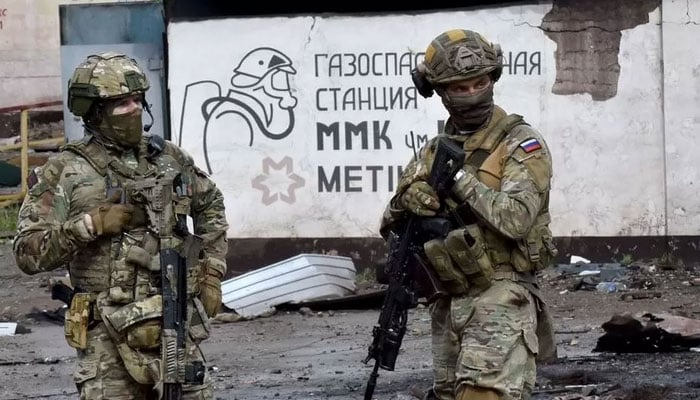
Kashvi Chandok
Women have always taken the front role of being the primary caretakers of communities all around the world. However, history is a witness to their absence from decision-making aspects about their own sustenance. In a world that is polarised, the plight of women as a separate interest group requires an equal representation in post-conflict and peacemaking programmes.
Although women have been active upholders of peace in different communities, this stance often lies in the informal realm of conducting protests, marches, discussions but falls short when it comes to the representation of women in the actual peacemaking decisions. A study shows that even in 2020, out of approximately 95,000 peacekeepers, women constitute 4.8% of military contingents and 10.9% of formed police units in UN Peacekeeping missions. The reason for the lack of female involvement in such programmes has primarily revolved around patriarchy and the gatekeeping nature of the societies.
Women as individuals and organised groups represent not only their communities but a gendered perspective on a conflict and its resolution which is why their involvement in peacekeeping programmes is not just crucial but necessary.
In countries like Cambodia, Angola, Nigeria and Columbia, female combatants have shown an increase in military participation over the last decade, however, the DDR (Disarmament, Demobilisation, Reintegration) as well as peacemaking operations in these countries have barely deployed females in the process and have even failed to establish a structural account of their needs. In situations like this, gender-discriminatory policies play a key component in conflict studies which have real-time effects on women in war zones, both in theory and practice.
India has failed to maintain a significant female representation in its internal services. Recent data by the Indian army showed that it has 12,18,036 men against 6,807 women who constitute 0.56 per cent of the force. While women in The Indian Air Force and Indian Navy form 1.08 per cent and 6.5 per cent respectively.
In February 2020, The Supreme court of India passed a ruling that will allow women to serve as army commanders. Following this, women will be allowed to be recruited on a permanent term basis, a feature that was previously restricted to men. However, this move was met with opposition from the Central Government with a claim that women are not physically equal to men, renewing once again the fact that Indian official services manifest orthodox patriarchal notions. The government also rebuked the ruling on the basis that a majority of the army men were “not yet mentally schooled to accept women officers in command.” The court, however, reproached the statement given by the Centre and ordered to implement the changes.
This stance of the court is definitely a relief but in actuality, we’re still far away from achieving gender equality in the military forces both, structurally and mentally.
Internationally, conflict and security resolutions are often dominated by males and Major Lund’s appointment , the first female to serve as Force Commander in a United Nations peacekeeping operation, hence advanced the discourse on including more women in conflicts, negotiations and peacemaking.
It’s also necessary to understand that women’s involvement in peacekeeping operations goes way beyond just military participation. In the last few decades, a significant number of regional and global humanitarian organisations have been set under female leadership. Some female-led coalitions have even managed to break through the vicious cycle, proving that their involvement is indispensable in a revolution. Conscious that the oppressed must help themselves, large numbers of women participated in the struggle for the liberation of South Africa, and as co-combatants were able to integrate into its theory the liberation of women. Continued involvement in the negotiations by women ensured that the new South Africa has a constitution that is gender-sensitive and women made significant contributions to the defence reforms in South Africa.
In times like these where the world is going through an all-pervasive intolerance in terms of culture, statehood, recognition of basic fundamental rights of minorities, it is imperative that formulation of peace corporations led by women increase in both regional and international sphere to promote peace and pluralism.
Why is it important to have more women at the decision making table
Women military officers are often critiqued not just by men but also by feminist factions such as Carol Cohn and Colleen Burke who perceive militarised operations as a patriarchal notion of power. At the same time, increased female participation in the decision-making dialogue leads to the identification of specific problems and also helps move away from generic gender interventions. Some studies also show that greater gender parity in peacekeeping operations reduces the risk of exploitation and abuse within the peacekeeping task force. Female leaders whether as appointed military heads or policymakers serve as an inspiration and empower other women to raise their voices for equality and the greater good. It is, therefore, important to focus on reducing the obstacles to women’s capacity for influence and decision in peacekeeping programmes.
On 12 May 2014, Major General Kristin Lund of Norway became the first female to serve as Force Commander in a United Nations peacekeeping operation, the UN Peacekeeping Force in Cyprus. Internationally, conflict and security resolutions are often dominated by males and Major Lund’s appointment hence advanced the discourse on including more women in conflicts, negotiations and peacemaking.
The multiple ways, in which women have initiated to bring order in their respective societies, they have been excluded from all official peace negotiations. For the hierarchy or patriarchal oppression to end, women need to be provided with spaces where they are at the top of the chain or else the suppression at the bottom-most level would remain stagnant. Thus, women should perform a key role in conflict transformation by initiating efforts to rebuild the community: they call home. Feminisminindia.com


